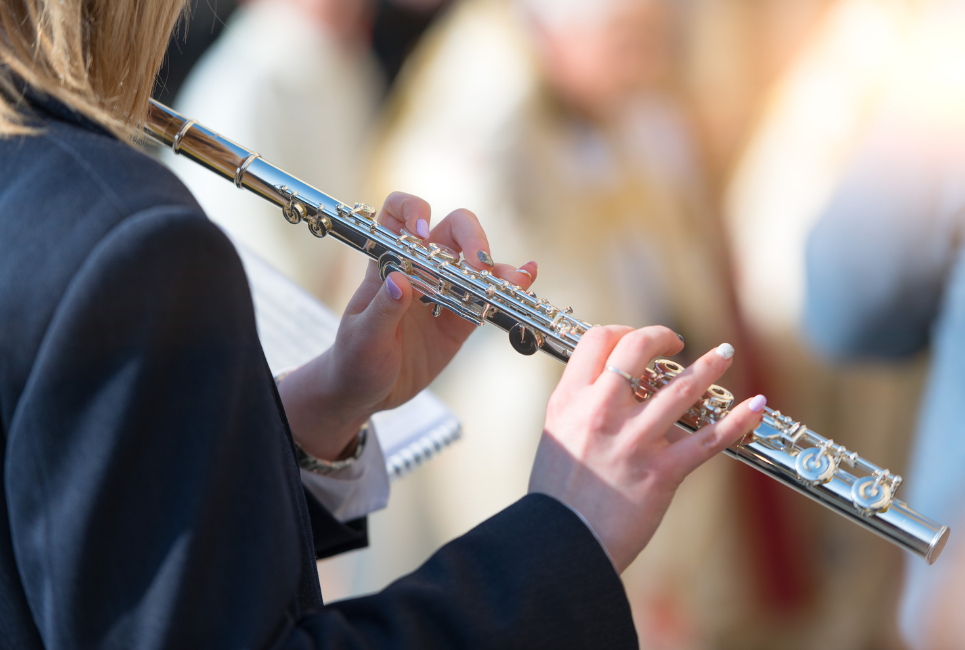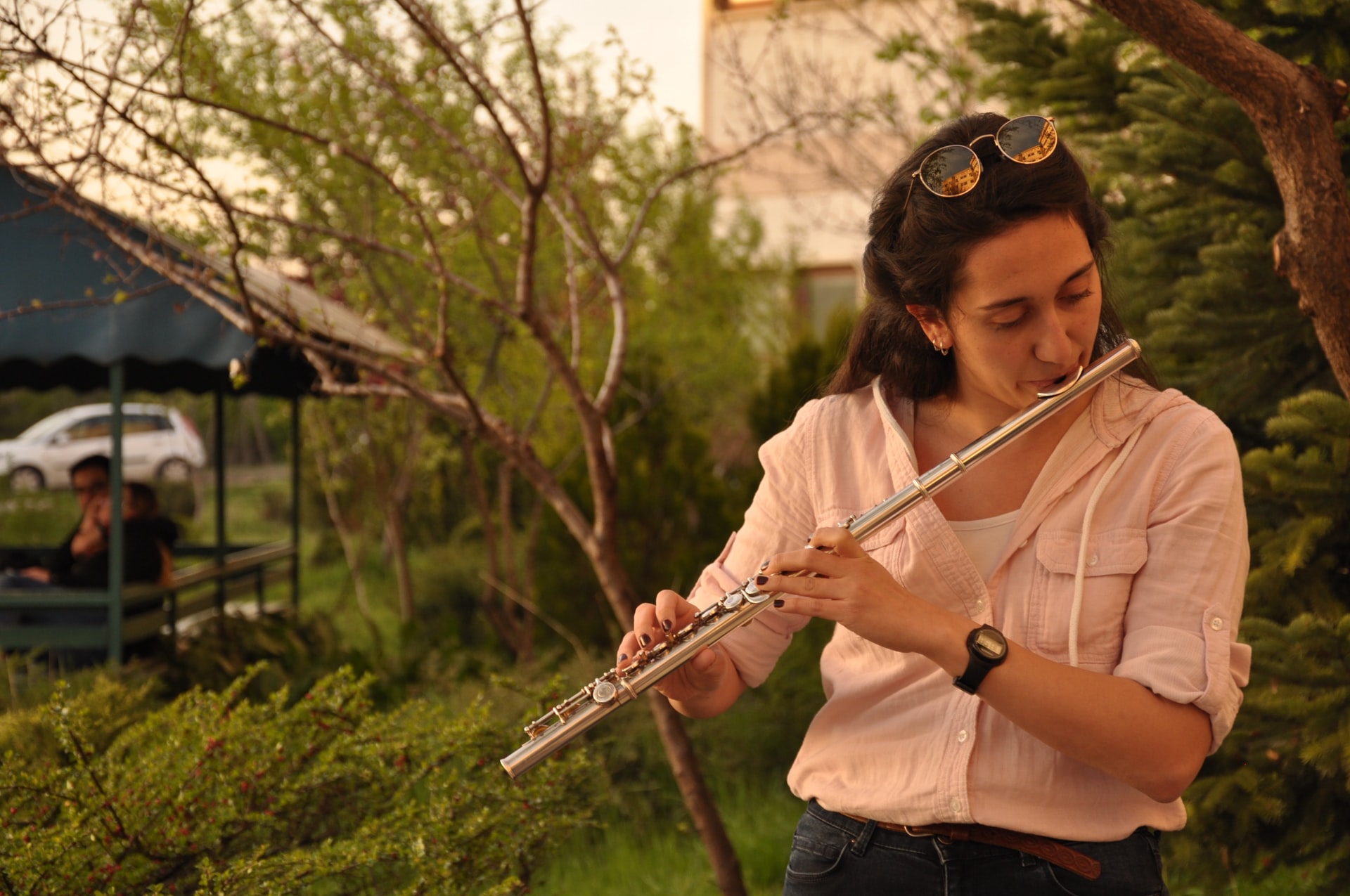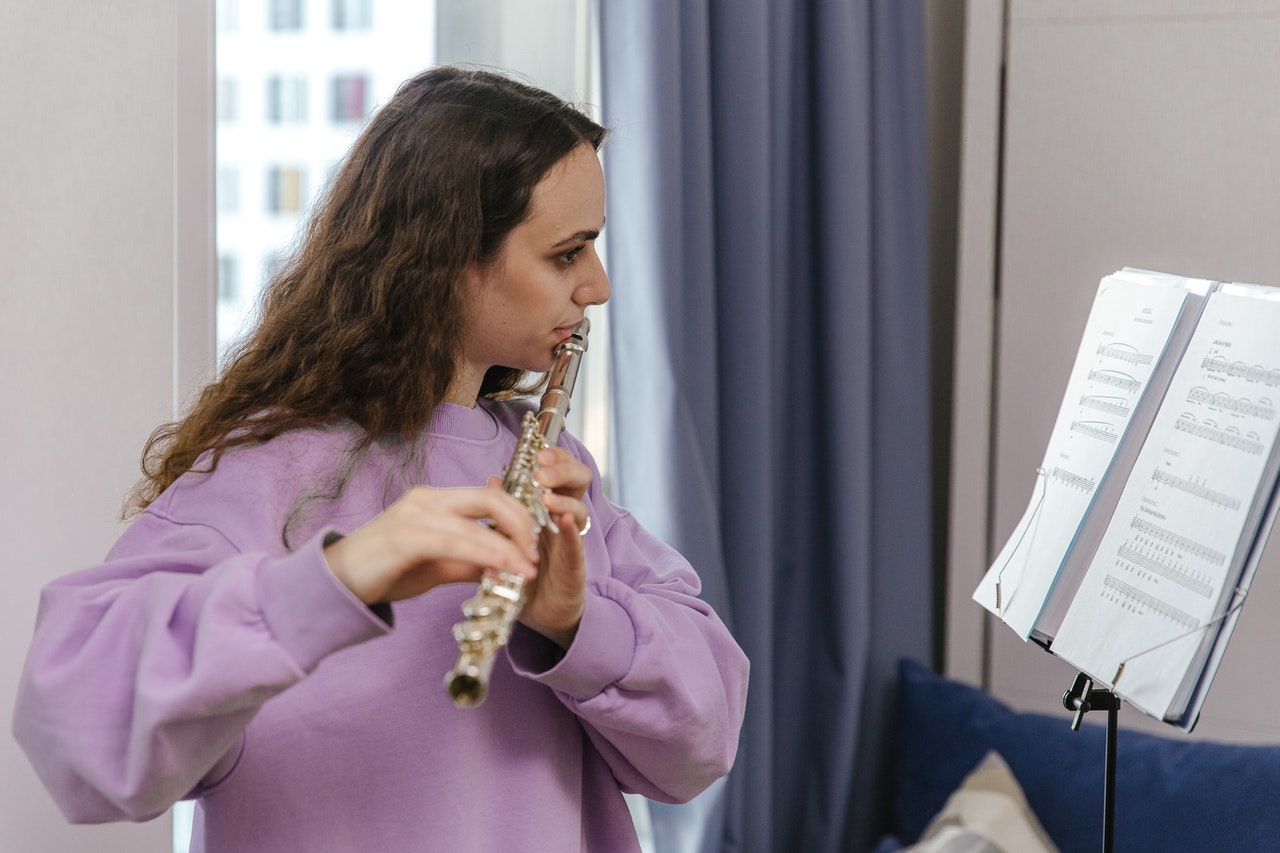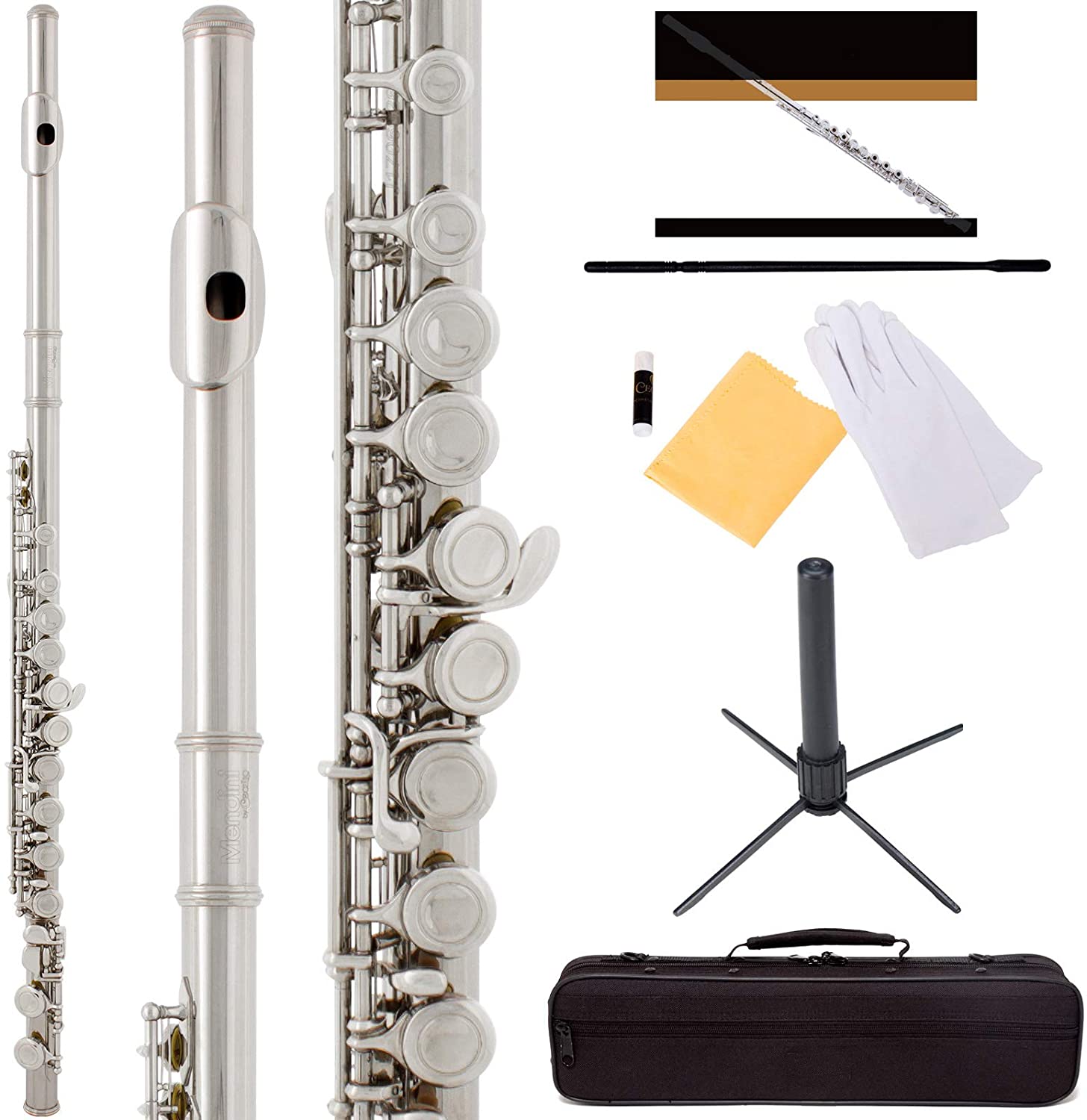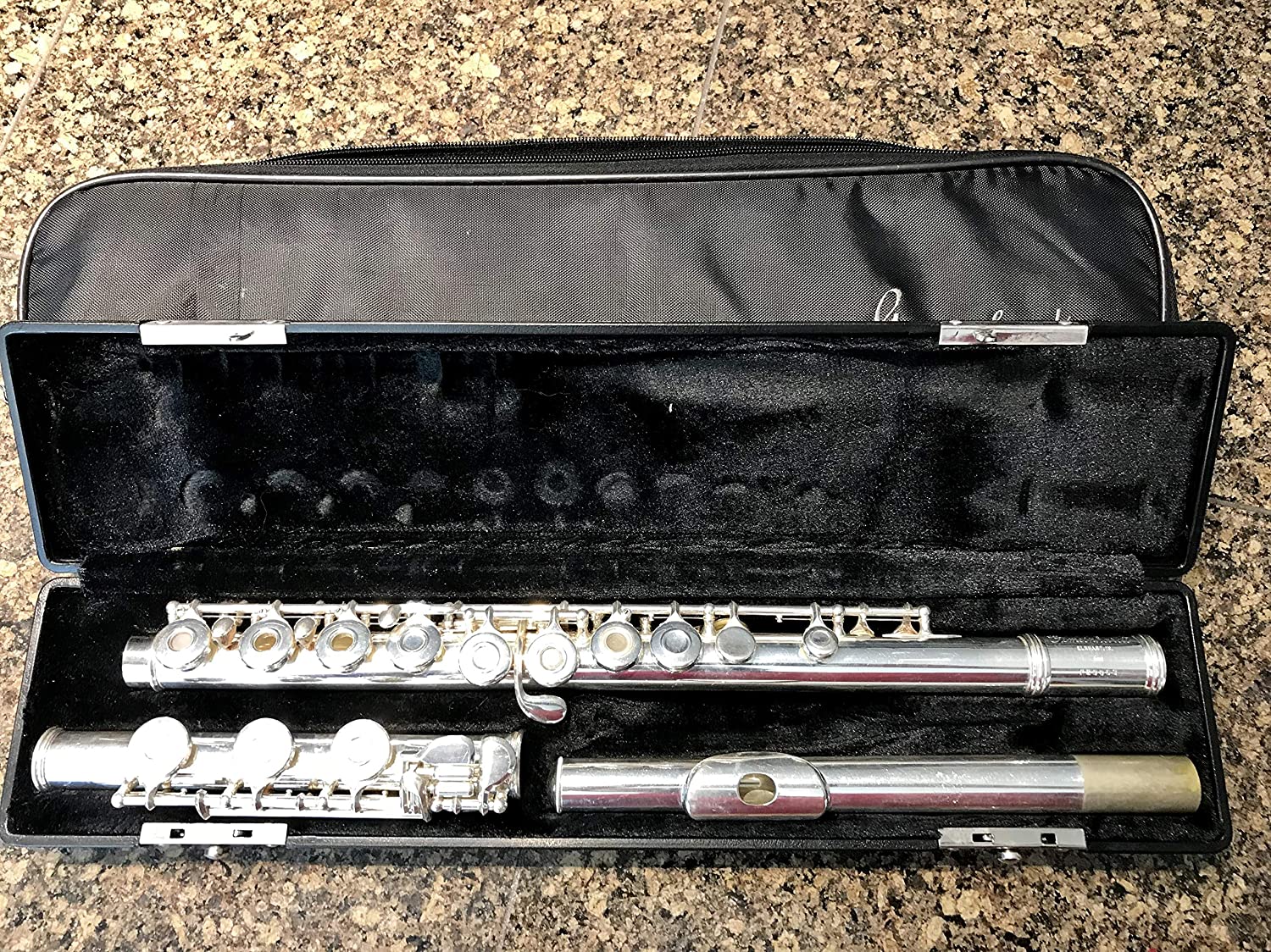- How to Learn to Play Cello Guide: The Only Guide You Need to Get Started - April 18, 2022
- How to Find the Best Trumpet Tuner - April 14, 2022
- Best Carbon Fiber Violins Guide: Why You Need the Glasser Carbon Composite Violin - April 13, 2022
So you’re thinking about moving up in the world and upgrading to an open hole flute?
Congratulations!
It’s a huge step, but the difference between playing a closed hole flute vs. an open hole flute is fantastic. If you’ve never even seen an open hole flute before, you may not be completely sure of what you’re getting yourself into. But, once you learn how to get comfortable with the open holes, new levels in your playing capabilities will open up.
In order for you to master the flute, you first need to find an open hole flute to begin working on int. But, with all of the different models on the market, how in the heck are you supposed to choose just one?
Stress no longer, my friend; I’ve got your back. I’m going to walk you through every step of the way. Buckle up, because you’re about to go through a rollercoaster of a guide!
Bottom Line Up Front
Overall, I would highly recommend the Mendini by Cecilio Premium grade flute. It’s the flute I personally used for many years of playing! If you aren’t a professional, these flutes will do well by you.
My Top Picks
- Best for professionals: Jupiter611RBS0 Intermediate Sterling Silver Flute
- Best for intermediate players: Gemeinhardt Model 3OB Intermedaite Flute
- Best overall: Mendini by Cecilio Premium Grade Flute
What Is an Open Hole Flute?
Okay, but first – what’s an open hole flute?
An open hole flute has six keys that have open holes. You may not even realize it, but the flute you’re currently playing on may already have open holes. When you first purchase a brand new open hole flute, the flute will come with plastic (or rubber) holes in them. These corks will keep the holes on your flute closed, if you don’t want to play open hole.
That’s right – you can pick and choose when you want to play open vs closed hole. Just because you’re upgrading to an open hole flute doesn’t mean that you can’t ever go back to playing closed-hole; if you want to switch back, all you have to do is plug the holes in your flute up and you’ll be set to play with closed holes.
And let’s say you’re still learning how to play closed hole, but you have a few keys that you feel pretty confident with playing open hole. You can close up some of the keys that you don’t have completely figured out, until you’re ready to play open with them.
After all, it does take a bit of an adjustment time. When you’re playing the flute open holed, you need to use the tips of your fingers to completely close off the hole in the key. If you don’t have your fingers placed in the right spot, it’ll leave the holes on the keys open. As a result, the sound your flute produces may sound squeaky or airy, like you aren’t properly supporting your instrument with your breath.
The good news is, is that you don’t need to have any special skills to learn how to play open hole. You’ll just need some practice and then over time, you’ll be able to master playing.
Open Hole Flute vs Closed Hole Flute: What’s the Difference?
The first thing that most people want to know is if there’s a difference between playing the flute open hole vs closed hole. Is there any sound difference between the two?
No, there isn’t a huge sound difference between closed vs open hole. But, if you’ve got a professional ear, you may notice an improvement in the tone of the flute. However, the difference in this could also be attributed to the difference in the quality of the instruments; a lot of higher end flutes tend to be an open hole. Student models tend to have closed holes.
The biggest difference in playing the open hole vs closed-hole flute is the difference in the positioning of your hands with the instrument. While you’re playing closed hole flute, you don’t need to have the pads of your fingers perfectly placed on the keys to play. However, with the open holes, the pads of your fingers need to be exactly placed on the key to seal up the holes.
If you don’t have perfect placement, you’ll have air leaking out of your keys. As a result, your sound could be squeaky, airy, and you’ll just have an overall low-quality tone.
Why Should I Play Open Hole Flute?
Now, if there isn’t a huge difference in playing the open hole flute, why should a person opt to play open hole instead of closed-hole?
Playing with an open-hole flute makes a lot of advanced techniques a lot easier to achieve, especially when compared to a closed-hole flute. For example, pitch bending, quarter pitches, slides, glissandos, and dynamic contrast are all techniques that are easier to achieve when you’re playing on an open-hole flute.
However, these advanced techniques aren’t required for a lot of beginners and intermediate level songs. So, unless you’re in an advanced ensemble as a student or you are looking to take your playing to the next level, you don’t necessarily need an open hole flute. At this point, it’s really just about personal preference and whether you enjoy playing on an open hole or closed-hole flute.
How Do You Play on an Open Hole Flute?
When you’re ready to take your playing to the next level, learning how to play an open hole flute is very exciting. However, it’s important for you to have a few tips in your back pocket so that you can make a smooth transition from a closed hole flute to an open hole flute.
First, I would highly recommend that you make sure that you’ve got your flute parallel to the floor. You’ll want to make sure that you’re holding a properly and that you aren’t letting your arms get too relaxed. Make sure that you aren’t holding the flute too tightly in your hands but rather cradling it, so your fingers are relaxed enough to gently press onto the keys.
Next, you’ll want to run through some notes slowly. As you’re playing your instrument, you’ll want to make sure that your fingers are completely covering the holes on the flute keys. You’ll need to be careful to make sure your fingers aren’t pinching down on the keys too much because it causes you to have problems with tonal consistency.
If you find that you’re really struggling and just aren’t interested in playing with open holes anymore, don’t worry. You can plug the holes in your flute back up with plastic (or cork) plugs that came with the purchase of your instrument. If you’re only struggling with certain holes, you can plug those holes up and still keep the rest of your keys open.
Tips for Buying an Open Hole Flute
As always, you’ll want to do plenty of research before you commit to buying a flute. With that being said, I’m going to share with you the tips I would highly (and I mean highly) recommend you use to purchase the best possible flute for your needs.
Research
First and foremost, it’s really important that you do a lot of research on different brands. They’re different brands that are well known throughout the flute community for developing high-quality instruments and other brands better known for producing low-quality instruments. If you’re working with a flute instructor, you should also consider talking to them to see what brands they would recommend.
Don’t buy the cheapest option you can find
Next, I would highly recommend that you stay away from purchasing the cheapest flute option that you can buy. Some stores and websites will sell flutes for super cheap, but the low price range is because the flutes are of lower quality.
Looking at specifications
When you’re shopping around for a flute, make sure you’re looking at the specifications. You don’t want to purchase a flute that doesn’t have the specifications you need to find success with your instrument. At the very minimum, you should purchase a flute with a C foot joint with a Split E (or an E mech) with closed holes.
You’ll also want to make sure that you get the right-sized flute. If you’re interested in playing the flute with a curved head joint, make sure you buy the correct size. Plus, you’ll want to think about where you’re looking to get yourself with your instrument in the future. There are certain flutes you can buy where you can upgrade the head joint of the flute later on to improve the sound quality of your instrument.
Selection Criteria
Now, before I introduce my favorite flutes, it’s important to highlight the selection criteria I used to make the product recommendations I’ve listed below. I chose all of the flutes in this guide based on my experience with each model, affordability, and positive customer experiences!
My Top Picks
Now, it’s time for me to introduce my personal recommendations. Without any further hesitation, here are my top open hole flute selections:
Best Overall: Mendini by Cecilio Premium Grade Flute
First up, the Mendini by Cecilio Premium Grade Flute. This flute is a great option for people who aren’t looking to spend a lot of money but want to ensure they’re getting a high-quality instrument upfront. This is a tremendous intermediate-level flute that can carry you for many years, all the way up until you’re ready to move up to an advanced level instrument.
Plus, the playability of this instrument is just amazing. It’s super easy to play on, partially because The head joint has a bevel embouchure. You’ll also notice that the G key on this flute is slightly offset, making it a lot easier for you to operate the split E on this flute.
What I think is really great a brother price this instrument is that the purpose of this flute comes with joint grease, a pair of white gloves, a holding stand, a cleaning rod, a case, and a cleaning cloth.
Pros
- Great flute for the pricing
- The flute comes with a one year warranty
- The pads are double bladder, so you find that the seal won’t give you any difficulties because it’s airtight
- The lip plate design makes it easy for you to rest your lips on
Cons
- This flute doesn’t have the high-quality tone that you’d find in a professional-grade flute, which is okay, considering the price
Best for Professionals: Jupiter 611RBS0 Intermediate Sterling Silver Flute
I would recommend this food to somebody looking to take their flute playing to the next level and enter into the professional world. Not only is this flute highly durable, but it also has an outstanding tone because it’s several parts of the flute are made was solid silver. For example, you will find that the head joint of this food is made with .925 solid sterling silver.
Due to the high-quality aspects of this flute, and the materials used in his production, I would highly recommend this instrument for someone who’s looking for something that’s professional-grade. The solid silver head joint alone helps to contribute to the flute’s overall tone, the warmth and darkness of the sound, and how well the instrument can project.
Keep in mind that this isn’t one of the most expensive flutes on the market that you would find. A few aspects of this food don’t make it top of the line in terms of professional flutes. The pads on this flute aren’t high-end. Plus, some parts of the flu aren’t made with solid silver, such as the foot joint. Instead of being made of solid silver, this flute was made from silver-plated nickel. This is a durable metal, but it doesn’t have the same sound qualities as solid silver.
Pros
- Open hole, but comes with plugs
- Amazing tone
- Has a Gizmo key
Cons
- Doesn’t have a split E
- Could be very expensive, especially if you’re a beginner/intermediate
Best for Intermediate Players: Gemeinhardt Model 3OB Intermedaite Flute
This is one of the most popular open hole flute models on the market. I love how this flute feels in my hands; but even more, I love how this flute sounds. The head joint just feels solid. I love how warm the tone is, but because of the shaping of the lip plate, the tone is well-rounded too.
And you aren’t limited with your lower registers with this flute; it comes with a B foot, so you’ll be able to range into the lower notes. While the body isn’t made out of solid silver, it is silver plated, so your flute will still look the part of a professional-grade instrument. With the purchase of this instrument, you’ll receive a case, case cover, and a cleaning rod.
Pros
- Smooth action
- Beautiful, warm, rounded tone
- Comes with a manufacturer warranty
- B foot really opens up register capabilities
Cons
- Only silver plated, which some may not be expecting because of the higher price range
- The inline G key isn’t great for people who don’t have long enough fingers
- The G key may also make it difficult for people to cover all of the open holes with this flute
FAQs
Answer: That’s right, there are five types of flute. There’s a piccolo, alto flute, bass flute, Eb flat, and C flute.
Answer: The flute is one of the most commonly plaid instruments. Thankfully, the flute is pretty easy to learn; some people find that learning how to play the melody is a lot harder to figure out than learning how to play the flute. More often than not, a lot of girls tend to learn how to play the flute; however, there are many professional male flute players, so don’t feel like boys can’t learn how to play the flute too!
The hardest part of playing the flute is learning how to support the instrument with your lungs. A lot of the air that you blow into your instrument ends up getting wasted by going over the top of the mouthpiece.
Answer: It doesn’t take very long for you to learn how to play the flute. Well, it’s a pretty basic concept to learn how to play the instrument; it can take several years for you to master how to play it.
Conclusion
Overall, I would highly recommend the Mendini by Cecilio flute. You can get introduced to the concept of playing an open hole with this flute, and if you decide you hate it, you haven’t wasted a ton of money. But, if you fall in love with playing an open hole flute, this instrument will last you many years (as long as you take care of it).
Playing open hole is SO exciting. Huge congrats on this new accomplishment! If you’re interested in looking at other flute models, check out our website for more!

